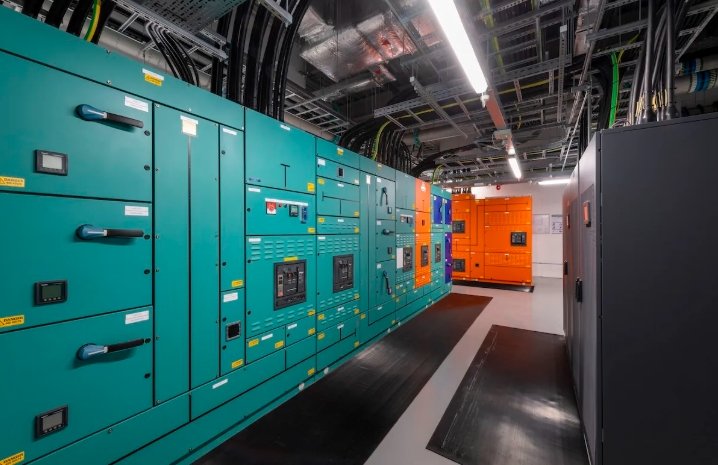Scotland is set to become the epicentre of Britain’s artificial intelligence (AI) revolution as Chancellor Rachel Reeves confirms a £750 million investment to build the UK’s new national supercomputer at the University of Edinburgh.
The announcement comes hot on the heels of London Tech Week, where Prime Minister Sir Keir Starmer unveiled a £1 billion initiative to turbocharge the UK’s compute power by a factor of 20.
Combined, the moves mark a seismic shift in Britain’s digital infrastructure—and a moment of redefinition for Edinburgh as it transitions from academic hub to AI nerve centre.
Why Edinburgh?
The capital of Scotland was selected not only for its world-leading computer science departments but also for its existing infrastructure, including the Edinburgh Parallel Computing Centre (EPCC), which hosts the ARCHER2 supercomputer.
The new system—expected to dwarf ARCHER2—will form the centrepiece of the UK’s AI Research Resource, a planned network of high-performance computing systems meant to power national breakthroughs in healthcare, climate science, aerospace, and pharmaceuticals.
Officials say the facility will make Edinburgh a “European AI powerhouse,” with one Treasury source adding, “This is not just a Scottish asset—it’s a national jewel.”

Inside the Numbers: A Breakdown of the Investment
| Category | Allocation |
|---|---|
| Supercomputer Infrastructure | £750 million |
| Wider UK AI Compute Investment | £1 billion (UK-wide) |
| Total Government AI Compute Package | £1.75 billion |
| Expected Capacity Boost (UK-wide) | 20x increase |
Much of the £750 million will go toward:
-
Building cutting-edge compute clusters
-
Funding cooling systems and energy efficiency upgrades
-
Supporting talent pipelines in AI and data science
-
Creating collaborative spaces for start-ups and researchers
A Tool for Every Sector: From Cures to Clean Energy
Unlike many AI investments that remain theoretical, the Edinburgh supercomputer is already being positioned for immediate practical impact.
Planned applications include:
-
Medical research: speeding up development of Alzheimer’s vaccines, cancer drugs, and personalised treatments by virtually simulating how compounds behave inside the body
-
Climate science: advanced climate models for predicting extreme weather and carbon emissions
-
Aerospace: designing next-gen aircraft with lower fuel burn
-
Energy: simulating green grid scenarios for national decarbonisation planning
“AI isn’t magic—it needs hardware,” said Professor Helen Markham, a leading AI researcher at the University of Edinburgh. “And this supercomputer is the hardware we’ve been waiting for.”
Global Benchmark: UK Joins Elite Ranks in Supercomputing
Just days before the Edinburgh announcement, the UK’s Isambard-AI system—based in Bristol—was ranked among the top 10 most powerful publicly available supercomputers in the world, and top 5 in Europe, according to the latest TOP500 global rankings.
The Isambard system also placed high for energy efficiency, reinforcing the UK government’s goal of becoming both an AI leader and a clean energy superpower.
This dual-focus—on innovation and sustainability—has become a central narrative in Rachel Reeves’ broader Spending Review, which pledges billions in long-term capital spending on infrastructure while holding a tight rein on day-to-day budgets.
AI Arms Race: How Britain Compares
| Country | Top Supercomputer | Peak Performance (ExaFLOPS) | Public Investment (Est.) |
|---|---|---|---|
| United States | Frontier (Oak Ridge) | 1.1 | $2.3 billion+ |
| China | Sunway Oceanlite (est.) | ~1.0 (unverified) | Unknown |
| Japan | Fugaku | 0.442 | $1 billion+ |
| United Kingdom | Edinburgh + Isambard (2025) | ~0.2 (projected) | £1.75 billion (combined) |
While still trailing global leaders like the U.S. and China in raw power, UK officials argue that targeted compute access for AI researchers—rather than raw size—is their strategy.
“We’re not in a race to build the biggest black box,” one government adviser said. “We’re building the most accessible and usable research infrastructure in the world.”
Local Impact: A Windfall for Scotland’s Tech Ecosystem
The arrival of the UK’s national supercomputer is likely to be transformative for Edinburgh’s tech ecosystem, with ripple effects expected across:
-
Start-up formation
-
University-industry collaboration
-
Talent retention
-
Regional investment
Scottish Enterprise has already signalled interest in supporting spinouts, while private venture capital firms are reportedly eyeing labs-to-market accelerators tied to the new compute centre.
Economists also note the jobs and upskilling potential, from high-end AI researchers to technicians, coders, and system engineers.
An AI Decade Begins
In announcing the investment, Rachel Reeves framed it as part of a “decade of national renewal,” positioning AI as a general-purpose technology akin to electricity or the internet.
“This isn’t just about coding,” she told reporters. “It’s about economic transformation and making sure people are better off—from health outcomes to better jobs to cleaner energy.”
The Edinburgh announcement, while technical in nature, may be remembered as a turning point—not just for Scotland, but for Britain’s place in the AI-powered future.


















